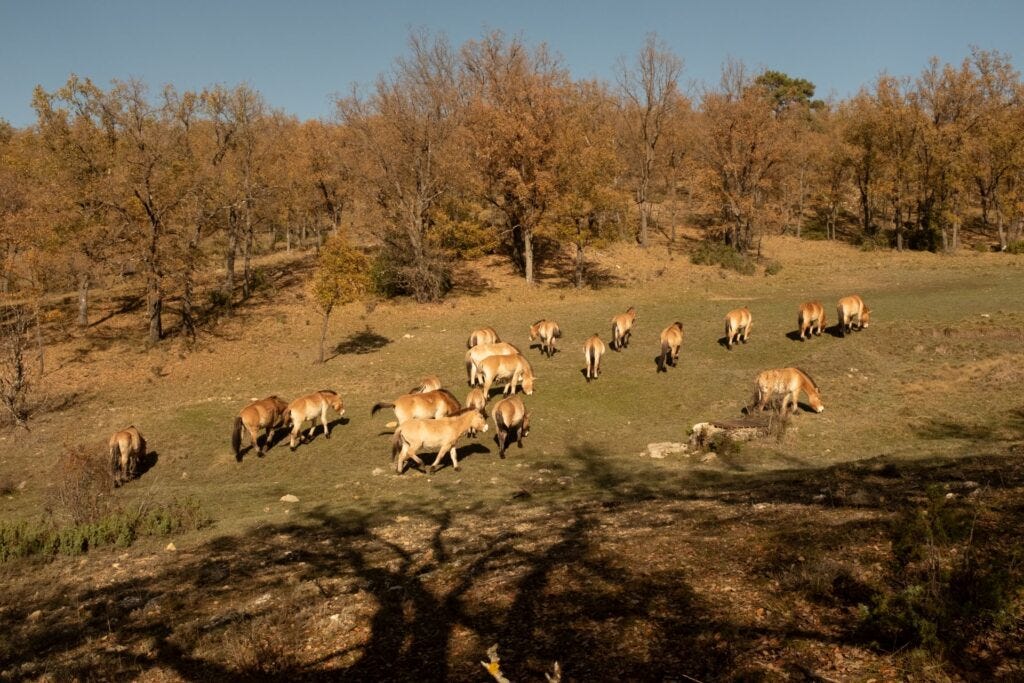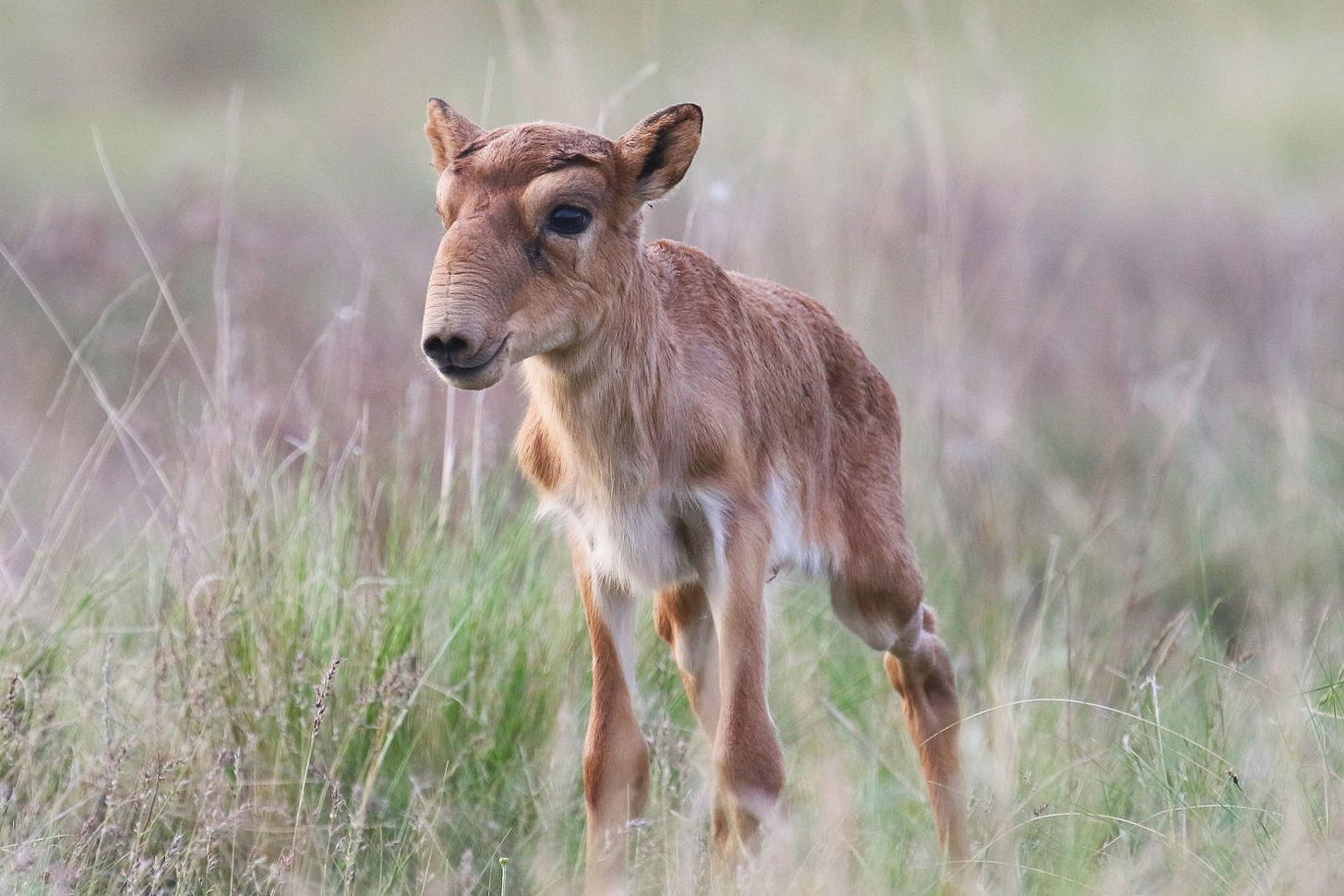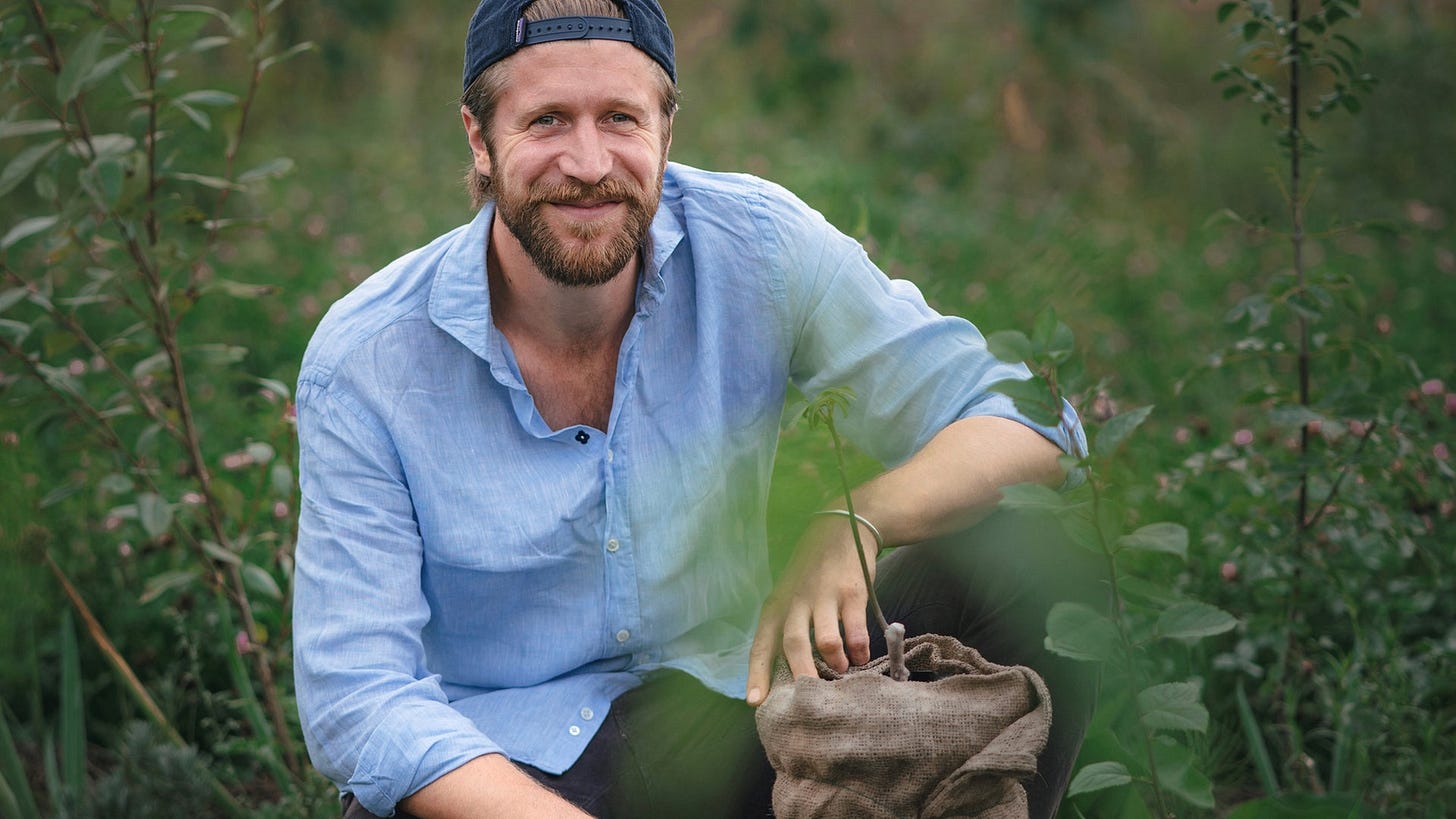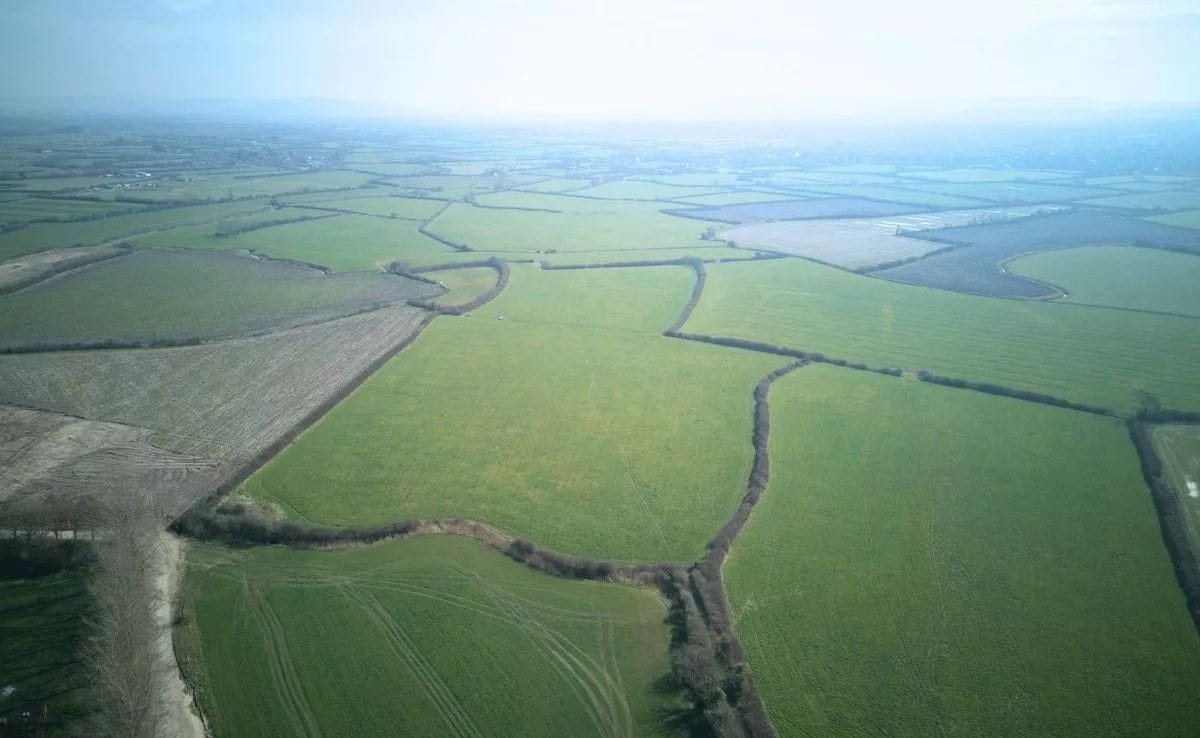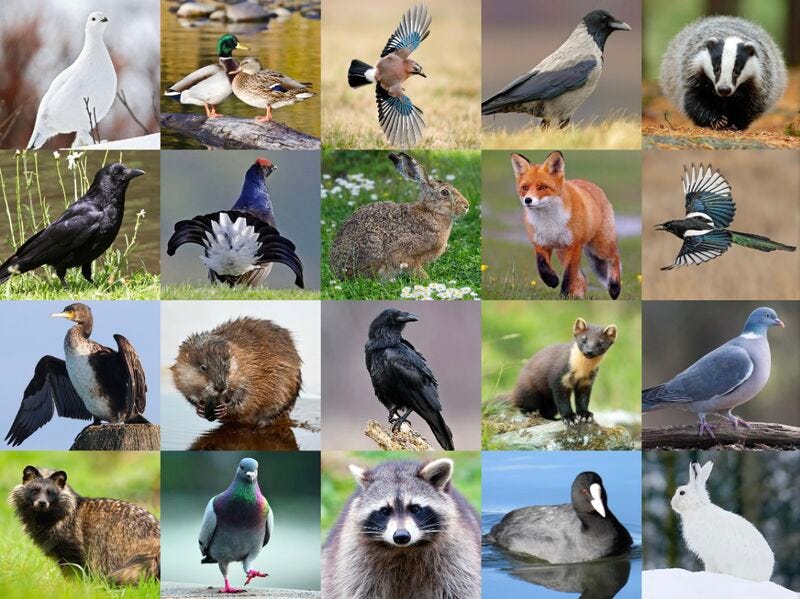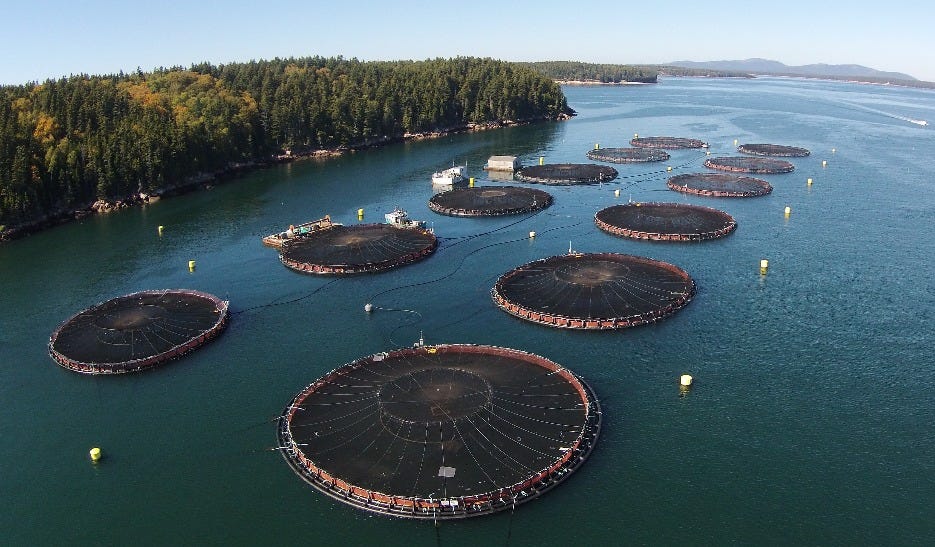Welcome to the latest edition of the Rewilder Weekly! 🦬🌳🐺🌞🌍
Before jumping into this week’s eight selected stories, I’d like to alert you to World Tuna Day. Wait, what!? Yeah, there’s a World Tuna Day and it is May 2nd, designated by the UN as such. I thought I’d highlight it because, when you read about sustainable tuna fishing, a great deal of progress seems to have been made, whereas with open-pen salmon farms around the world (the 8th of this week’s below articles), well, things haven’t progressed much at all so far.
Now then, let’s get on with it - wishing you a good week.
Cheers,
👉 As a reminder: If you come across stories you’d like to see featured in an upcoming edition of the Rewilder Weekly, send them to me and I’ll gladly do what I can.
1) The secret life of Italy’s Bosco della Selva
One really shouldn’t love traps - except for camera traps, of course! Our friends at Rewilding Apennines have put together a brief one-and-a-half-minute collection of wildlife captured in the Bosco della Selva, a forest managed by Rewilding Apennines and the Università Agraria of Castel Madama. The traps help with the research of documenting presence and distribution of animals.
This is as good an opportunity as any to once more highlight the rewilding experiences they offer. They have volunteers from around the world showing up to help with all matters rewilding. Now when you watch the above clip, imagine being there, in that forest, knowing that around you there are wildcats, martens, badgers, wolves, birds of prey - a forest teeming with biodiversity-rich life. Makes you want to book your next trip right now, right? Go for it!
👉 Go here to see the Rewilding Apennines volunteering programs
👉 here to see the Rewilding Apennines rewilding experiences
👉 and here to engage on LinkedIn
2) Tom Bowser’s fighting for beavers in Scotland
After writing “A Sky Full of Kites”, Tom Bowser next book is about to drop - it’s called “Waters of Life: Fighting for Scotland’s Beavers”. Here’s the thing: Rewilding is all about collaboration and common sense supported by scientific evidence. None of it should be controversial - but traditions run deep and our species keeps showing the world that we’re excellent at doing the wrong thing. Because of that, sometimes, collaborative efforts are hindered by recalcitrant minds.
The subtitle for Tom’s book couldn’t be more aptly chosen as beavers are clearly native and clearly understood as keystone engineers; as climate change and biodiversity loss crises clearly demand action; and as the science just as clearly supports beaver rewilding efforts … and yet, the entrenched mindsets and a government agency that is deliberately dragging its feet are hindering the abundantly obvious necessity of more beavers in Scotland.
👉 Go here for Tom’s blog entitled “The Great Beaver Betrayal”
👉 and here to engage on LinkedIn
3) Rewilding: a gold standard for ecological recovery
There are more and more rewilding stories popping up, so of course I’ll be missing this and that along the way - among these I’ve just come across a piece written by Rewilding Europe’s Frans Schepers. He writes, “For too long, environmental narratives have been dominated by fear and loss. Rewilding offers a different approach. Instead of only fighting threats, we can also seize opportunities. And such opportunities are all around us. We can give nature a helping hand, regenerate ecosystems, and create lasting benefits for both nature and people.”
I very much like how he frames it, how different narratives dominate over the course of time. How our ways were long dominated by religion, then came the age of enlightenment and today it’s global finance and macroeconomy. He rightly points out that such dominant systems come and go - and when they go, there’s space for something new - enter rewilding! Oh, and I love that sentence (because I can’t stand the term conservation as it’s no longer fit for purpose): “Rewilding is not about restoring a painting that needs curation, but about restoring a system that can look after itself.”
👉 and here to engage on LinkedIn
4) How the saiga antelope made a comeback
Did you know that Kazakhstan is the 9th largest country in the world? Well, it is - and its government has long committed to protecting 30% of its lands. Good news for Kazakhstan, good news for the world. The Altyn Dala Conservation Initiative has long worked to restore steppe wildlife with a focus on ancient species such as the feral Przewalski’s horse, the wild kulan (a feral donkey) and the saiga entelope.
The saiga antelope used to migrate in the hundreds of thousands - and were contemporaries of the woolly mammoths and rhinos! Then our species showed up and with hunting and later poaching and diseases, numbers dwindled to a mere 21’000 in 2003. A great deal has happened since. While the CNN article talks of 2.8 million saiga entelopes in Kazakhstan today, elsewhere I’ve read that there’s as many as 4.1 million now - now that’s one heck of a success story.
👉 Go here for the article (it also explains the reason for the peculiar nose)
👉 and here to engage on LinkedIn
5) Rewilding and regenerative farming go hand in hand
“We are not owners of the land, we are its guests,” said Benedikt Bösel during his acceptance speech for an award at the Forum for the Future of Agriculture. I always struggle when the farming lobby bellows its outrage about farmers against the rest of the world. I never see it that way, I know, as many know, that agriculture is essential and that the world’s easily big enough to feed humanity - and to give nature everything it needs (space and time and care) to recover and flourish.
"I accept this award not just on behalf of myself, but on behalf of the soil. Because we are not owners of the land, we are its guests, its students, and hopefully its regenerators … This is a story of economics, of policy, of science, of courage. If we want landscapes that serve both people and planet, we must rethink value. We must reward regeneration, not depletion. And we must build our alliances that go far beyond our fields - into boardrooms, parliaments, and classrooms.”
👉 Go here for speech (and transcript) on LinkedIn
👉 and here to learn more about the award
6) This green desert is about to thrive again
By now more and more people know that what you’re looking at here is monocultured land, land that is degraded, land that has become home to fewer and fewer flora and fauna. Well, things are changing for the better on this land, thanks to one of the Wallace & Gromit creators - thank you, Peter Lord!
Somerset Live reports that the Avon Wildlife Trust got a financial boost by Lord to help buy the 44-hectare former Ebdon farm in North Somerset. The trust aims to morph the farm from its past life as a dairy operation into a thriving hotspot for diverse species—a task expected to span several years. They describe it as “one of its largest projects to date”. This is exactly what needs to happen more and more - and on ever bigger scales that connect nature restoration-focused landscapes.
👉 and here to engage on LinkedIn
7) All of these can be legally shot in Switzerland
You may wonder why, in a newsletter about rewilding, I occasionally write about the world of shooting estates and hobby hunters and other forms of animal cruelty. The thing is, I cannot separate the two. Rewilding, to me, is very much about a new balance between humanity and nature, and it is very much about a lived respect and care for nature … and that, of course, includes animals.
Sometimes, animals are killed out of necessity. I get that. What I will never understand is that people can look through their rifle’s scope, see a bear or wolf or lynx or deer - or any of those smaller animals above: a stunning jay, a gleaming fox, a strutting black grouse, a thumping hare, a happily chattering magpie - and then pull the trigger for the joy of it. Rewilding means respect. As a species, we absolutely must evolve away from hobby/joy slaughter of billions of innocent animals.
👉 Go here to engage on LinkedIn
👉 and here to engage on LinkedIn about ending trail hunting
8) The destructive might of open-pen salmon farms (and the forces behind them)
After meeting with the Blue Hope Alliance members and volunteers, Nicky Middleton-Jones, Sara Nason and Lucie Wuethrich and learning about the threats to the precious maerl bed habitats off the shores of Scotland’s Wester Ross, I wanted to learn more about salmon fish farms.
In this article I’m talking a closer look at: the the global salming farming economy; marketing and spin; greed and greenwashing; the inner workings of salmon farming; better alternatives; the current situation and global efforts to end open-net salmon farming; and the horrible realities of what happens on the seabeds below those fish farms. Like me, you'll think twice before buying salmon after reading this. Again, there are better ways such as closed-pen and land-based salmon farming. Check the label to see what you're buying and learn more about global efforts to ban open-net salmon farming from the Global Salmon Farming Resistance . Go here for their website
👉 Go here to engage on LinkedIn
To conclude this week’s edition, science illustrator Beverly McKay shares a rendering of a playful trio of black-winged stilts (himantopus himantopus). It gives one a spring vibe, doesn’t it? Really makes me want to dip my feet into those waters.
If you enjoy the Rewilder Weekly …
… consider supporting my work. Your paid subscription will help generate the funds needed to realize a unique rewilding book I’m working on (if you want to know more about it, let me know). And, of course, that paid subscription also ensures that the Rewilder Weekly will always keep going for those who cannot afford to pay. A thousand thanks!
That’s it for this week’s edition! For more rewilding insights and stories from around the globe, use the #rewilding hashtag on LinkedIn and follow people, organizations and groups that are as passionate about rewilding as you are. Let’s keep connecting and growing the movement!











